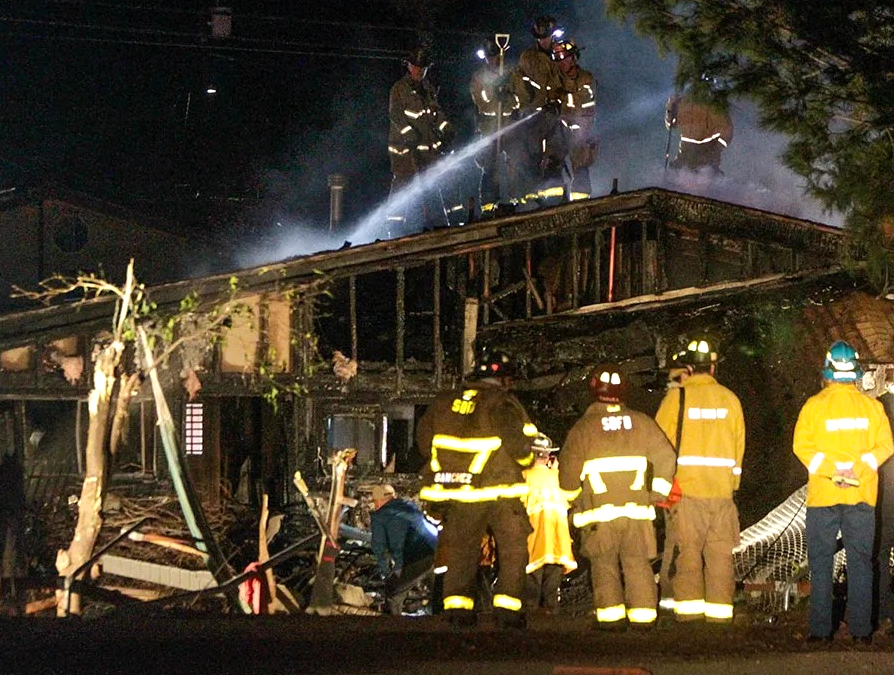On the morning of Thursday, May 22, 2025, a small private aircraft crashed into a densely populated residential neighborhood in San Diego, California. The crash resulted in the deaths of four individuals onboard and caused serious damage to nearly a dozen homes and several vehicles. This article provides a comprehensive analysis of the crash, exploring the sequence of events, emergency response, the implications for aviation and public safety, and the broader social and psychological effects on the affected community. Through eyewitness accounts, emergency service data, and expert analysis, this article contextualizes the disaster within larger discussions on urban aviation risk, regulatory oversight, and community resilience.
Introduction
Small aircraft crashes, while rare, can yield catastrophic consequences when they occur over urban landscapes. On May 22, 2025, a tragedy unfolded in San Diego, California, when a twin-engine aircraft crashed into a residential neighborhood, killing everyone aboard and leaving a path of destruction across several homes and vehicles. The event has raised renewed scrutiny over the safety of low-altitude urban flight paths and the preparedness of emergency services to respond to airborne disasters in densely populated zones.
Incident Overview
Aircraft and Flight Details
The aircraft was identified as a Beechcraft Baron 58 operated by Aeromedevac Air Ambulance, based in El Cajon, California. It departed Montgomery-Gibbs Executive Airport at 7:30 a.m. on a medical transport mission to Yuma, Arizona. Approximately 13 minutes into the flight, the pilot radioed air traffic control reporting engine issues. Eyewitnesses described erratic flight patterns, followed by a rapid descent and an explosion as the plane collided with a residential street near El Cajon Boulevard.
Damage and Casualties
The aircraft’s impact led to an intense fire that destroyed or severely damaged at least ten homes and multiple vehicles. Firefighters responded swiftly, containing the blaze within 45 minutes and rescuing several trapped residents.
Identified Victims
All four individuals on board perished:
- Tina Ward – A veteran flight nurse and wife of retired Oceanside Fire Department Deputy Chief Joe Ward.
- Laurie Gentz – A flight nurse and president of the International Association of EMTs and Paramedics Local 162.
- Douglas James Grande, 45 – A seasoned pilot described by family as a devoted husband, father, and friend.
- Julian Jorge Bugaj, 67 – A highly respected pilot and certified flight instructor known for his passion for aviation.
All victims were employees of Aeromedevac Air Ambulance and were en route to provide medical support.
Injured Individuals
While no residents were killed, several suffered injuries:
- Five members of one family were hospitalized for smoke inhalation.
- One individual jumped from a window to escape and was hospitalized with minor injuries.
- Two additional people were treated on-site by emergency responders.
In total, 26 residents were displaced, with emergency accommodations provided by the city.
Emergency Response and Investigation
San Diego Fire-Rescue Department deployed over 60 personnel, including fire suppression, search-and-rescue, and hazardous materials units. Fire Chief Carla Mendoza stated that the rapid spread of fire, fueled by aviation fuel, could have caused a greater catastrophe if not for the speed of their response.
The National Transportation Safety Board (NTSB) launched an immediate investigation. Preliminary assessments suggest engine failure as a leading cause, though a full investigation including flight data analysis, aircraft maintenance records, and witness interviews is underway.
Broader Implications
Urban Aviation and Risk Management
The incident has rekindled concerns about small aircraft flights over urban neighborhoods. Aviation policy experts are calling for a reevaluation of air traffic routes over residential areas, particularly for medical and private flights operating at lower altitudes without sufficient emergency landing options.
Psychological and Social Impact
Residents described scenes of panic and confusion. The trauma of narrowly escaping death and the destruction of personal property has left many struggling to cope. Mental health professionals have been dispatched to the area, and the city has established support services for affected families.
Mayor Ricardo Gonzalez pledged citywide support: “We are mourning the loss of four dedicated professionals and doing everything possible to restore stability to this shaken neighborhood.”
Conclusion
The May 22, 2025, San Diego small plane crash is a tragic reminder of the dangers posed by aviation operations in densely populated environments. While the investigation continues, it is clear that this event will shape future policy discussions on flight safety, emergency preparedness, and community resilience. The lives lost will be remembered not only for their professional dedication but for the deep sorrow their passing has brought to the San Diego community.
References
- Federal Aviation Administration (FAA). (2025). Preliminary Incident Report: San Diego Private Aircraft Crash.
- National Transportation Safety Board (NTSB). (2025). Aviation Accident Database & Synopses.
- San Diego Fire-Rescue Department (SDFD). (2025). Emergency Response Briefing: May 22 Incident.
- People.com. (2025). “2 Flight Nurses Identified Among the Victims of San Diego Plane Crash.”
- CBS 8 San Diego. (2025). “Victims of San Diego Plane Crash Identified.”
- AP News. (2025). “San Diego Neighborhood Plane Crash Kills 4 in Air Ambulance.”
- San Diego Tribune. (2025). Eyewitness accounts and interviews.

By: Donte Nelson


